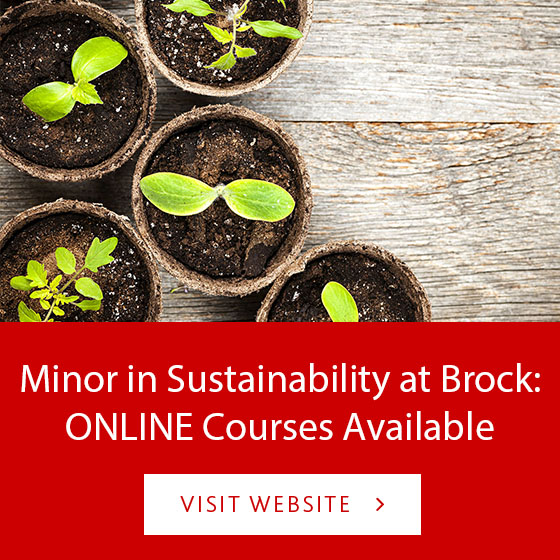Blog Contributor: Connor Thompson

Brock University closed out 2018 by unveiling a new Strategic Plan titled “Brock University: Niagara Roots – Global Reach”. Meant to serve as a guide to planning and decision-making processes through 2025, you should not be surprised to see environmental sustainability as a focal point of the Plan!
“Sustainable, accountable, transparent stewardship” is listed as the eighth and final guiding value that the University is committing to over the next seven years. Brock recognizes its position as a steward of public and private resources, which is especially important as the school exists within a United Nations Educational, Scientific and Cultural Organizations (UNESCO) Biosphere Reserve on the Niagara Escarpment. Understanding how the institution operates and the effect it has on human, financial, and environmental resources will be critical to achieving sustainable outcomes across all three categories.
Additional focus is given to environmental sustainability in regard to meeting societal expectations and demands. As Brock is a publicly-supported institution, the University is obligated to meet and ideally exceed all legislative requirements including those pertaining to environmental protection and sustainability. The University is in a prime position to serve as a benchmark for other institutions to try and meet, and this new Strategic Plan affirms a willingness and desire to improve our sustainability efforts across campus and into the greater community.
You can read through the entirety of Brock’s new Strategic Plan: “Niagara Roots – Global Reach: Brock University Institutional Strategic Plan 2018-2025”












